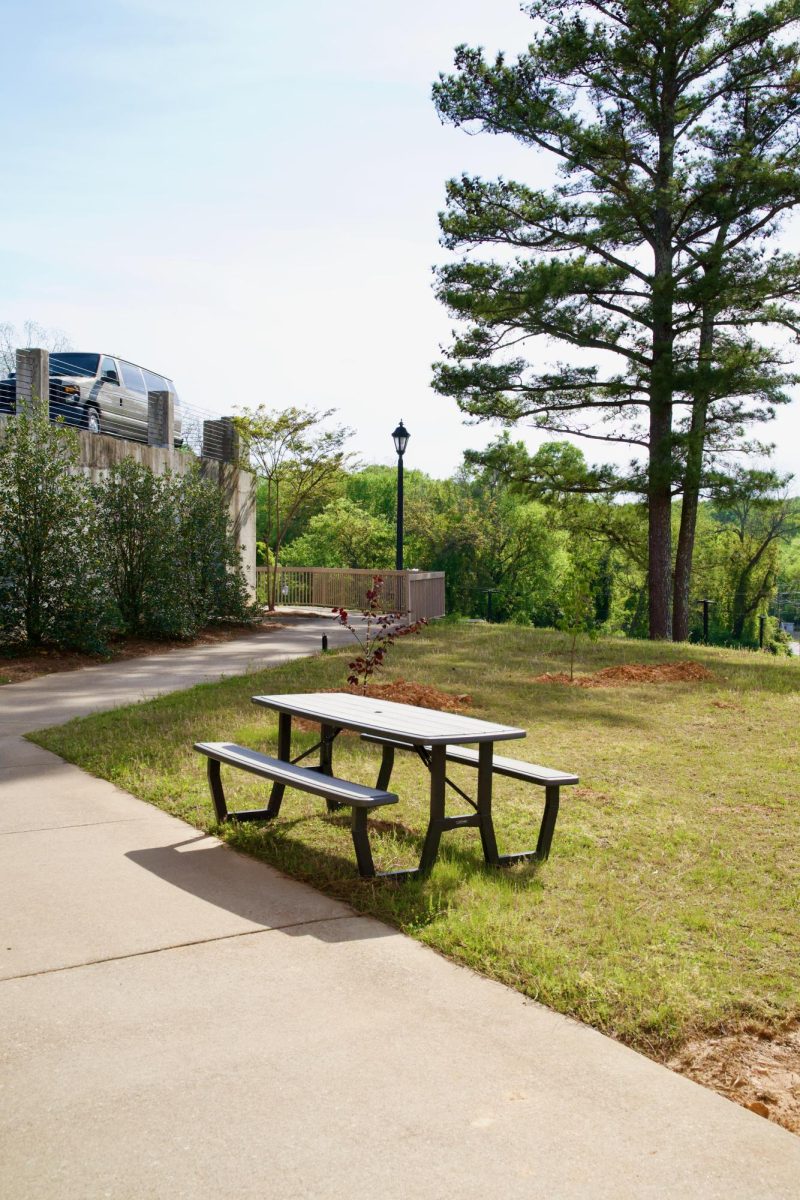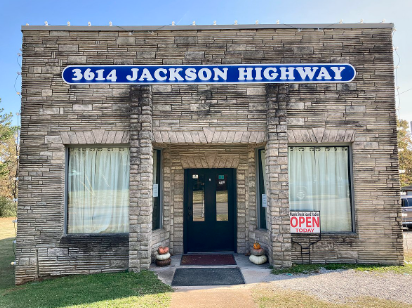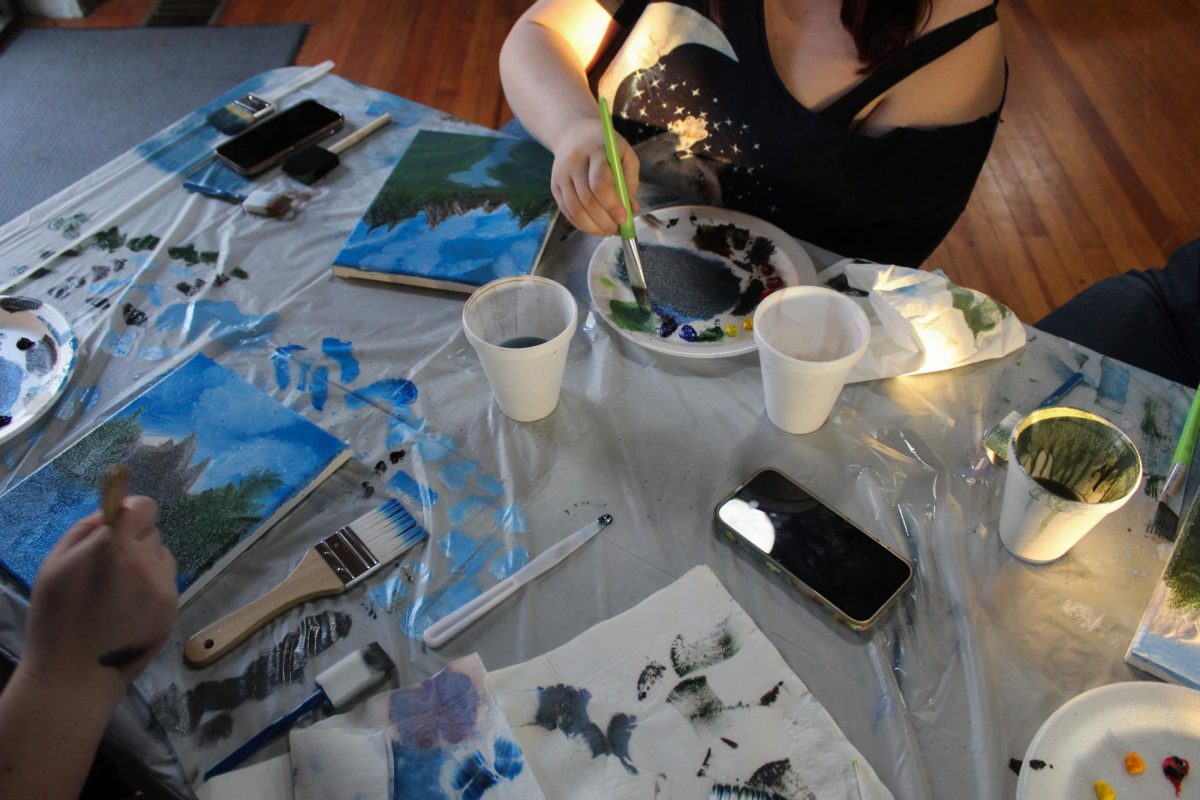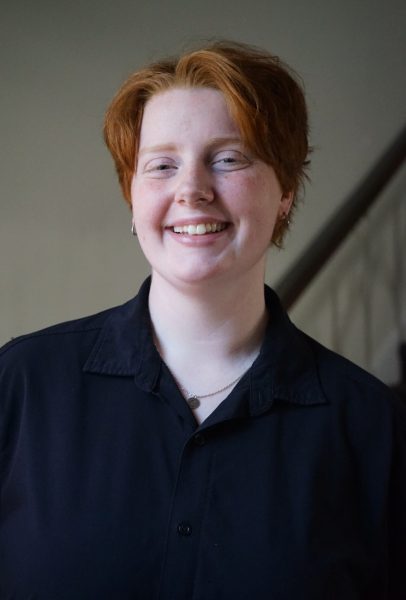University of North Alabama sustainability major Katie Saxon is creating a sitting area behind the Mitchell Burford Science and Technology Building as her Capstone project.
Saxon has been passionate about sustainability since the age of fifteen. She learned about the zero waste lifestyle through an article and was interested in learning more, and ever since, she has been fascinated with living more sustainably.
Originally an environmental biology major, Saxon took a class from Dr. Gregory Buckley, an associate professor of Earth Science, which covered the topic of zero waste.
“After years of trying to be zero waste, I realized that it’s not actually feasible unless you have a lot of money,” said Saxon. “In order to avoid plastic, everything’s more expensive. I went to talk to Dr. Buckley about that. I told him that zero waste is not feasible, and he was really excited that I had come to challenge that section of the class.”
That conversation with Buckley informed Saxon that UNA offers a sustainability major, so she changed her major.
This year is Saxon’s senior Capstone year, meaning that she is required to present a project within the scope of her major. Saxon decided to create an area behind the Science and Technology Building that is filled with native plants, providing habitats for local wildlife.
“I always want to make a difference, a physical difference, so I tried to figure out what could help me do that,” Saxon said. “Native plants have been really big on TikTok lately, and I wanted to help show people that it’s possible to have beautiful landscaping with native plants.”
Saxon’s focus on native plants stems from the harm that non-native plants can have on native species. Typically, non-native landscaping is invasive or does not support the local wildlife.
Before starting the project, Saxon sought guidance from Buckley, who liked the idea of the project and encouraged her to carry it out.
“It is her baby,” said Buckley. “She came up with the idea, and her background as a master gardener, her interest in native plants and her desire to make a difference on campus really lent itself to everything that she has made this project into being. I am here to help facilitate the things that she needs.”
From there, Saxon had to get permission to use the area, and she also had to acquire funding for the project. She selected plants from a local nursery, specifically choosing ones that are native to the area and thrive in local weather conditions. Having native plants also assures Saxon that there will be plenty of chances for local wildlife to engage with new habitats.
“This will provide habitat for a lot of native creatures,” Saxon said. “There are a lot of butterflies and other insects that rely specifically on certain plants, so I want to provide those plants in this landscape for those insects to take advantage of. I’ve planted blueberry bushes so that students can come by and have snacks. Also, the native honeysuckle is very important for hummingbirds. The day I came up here to plant them, before I even put it in the ground, a hummingbird came up to it, so that proves to me that it’s already been helpful for the hummingbirds.”
Maintenance workers helped Saxon to dig some of the holes for her chosen plants, and she was aided by her husband in planting the plants. Along with the plants, she also installed a picnic table for students, faculty and staff to use. She plans to install trellises for some of the plants to climb, as well as birdhouses and a birdbath, in the near future.
“There have been studies showing that when humans have access to green spaces, our mental wellbeing is better,” Saxon said. “That is my intention: to create another beautiful spot for people in the Science and Technology Building to sit and hang out. Really, we have some benches, and in the spring and summer those bushes by them do bloom, but I wanted another area, and honestly, I wanted a picnic table. I like to be able to eat outside.”
Saxon hopes that the area is able to be utilized by many at the Science and Technology Building, as well as by classes that wish to study the species present in the newly-formed habitat. Buckley shares the same wishes, and he also hopes to see other areas of campus transformed into green spaces in the way that Saxon is working to transform this one.
Saxon has faced challenges in her project which have slowed progress. The soil in her chosen location is hard and filled with gravel, providing a difficult place to dig holes for plants. While digging the holes, Saxon even hurt her back because of the difficulty the soil provided. In addition to this, shortly after planting some of her plants, heavy storms came through the area, potentially damaging some of the plants. Despite these difficulties, Saxon plans to plant more plants to replace those that were damaged, showing that she is able to work through the challenges of a project such as this.
“A challenge in sustainability is reclaiming these spaces that change the environment,” Buckley said. “She’s been able to do all of that with very little guidance from me. I enjoy seeing students that are so passionate about what they’re doing.”
When she is done with her project, Saxon will create a presentation to present to the committee on May 2. The committee will then go outside to see the physical results of her hard work.
Saxon’s experience has helped her to gain confidence in her ability to educate others on sustainability, which is what she hopes to do in her future career.








